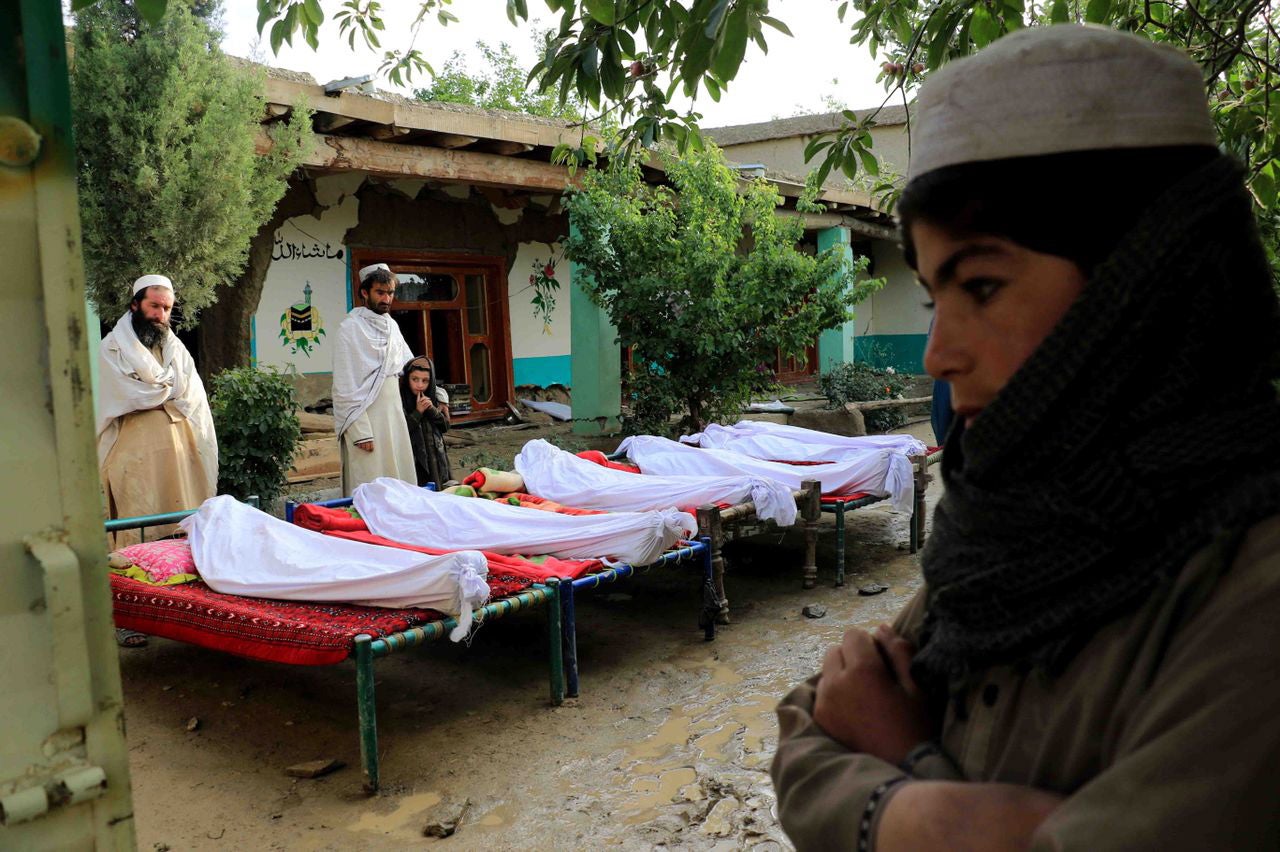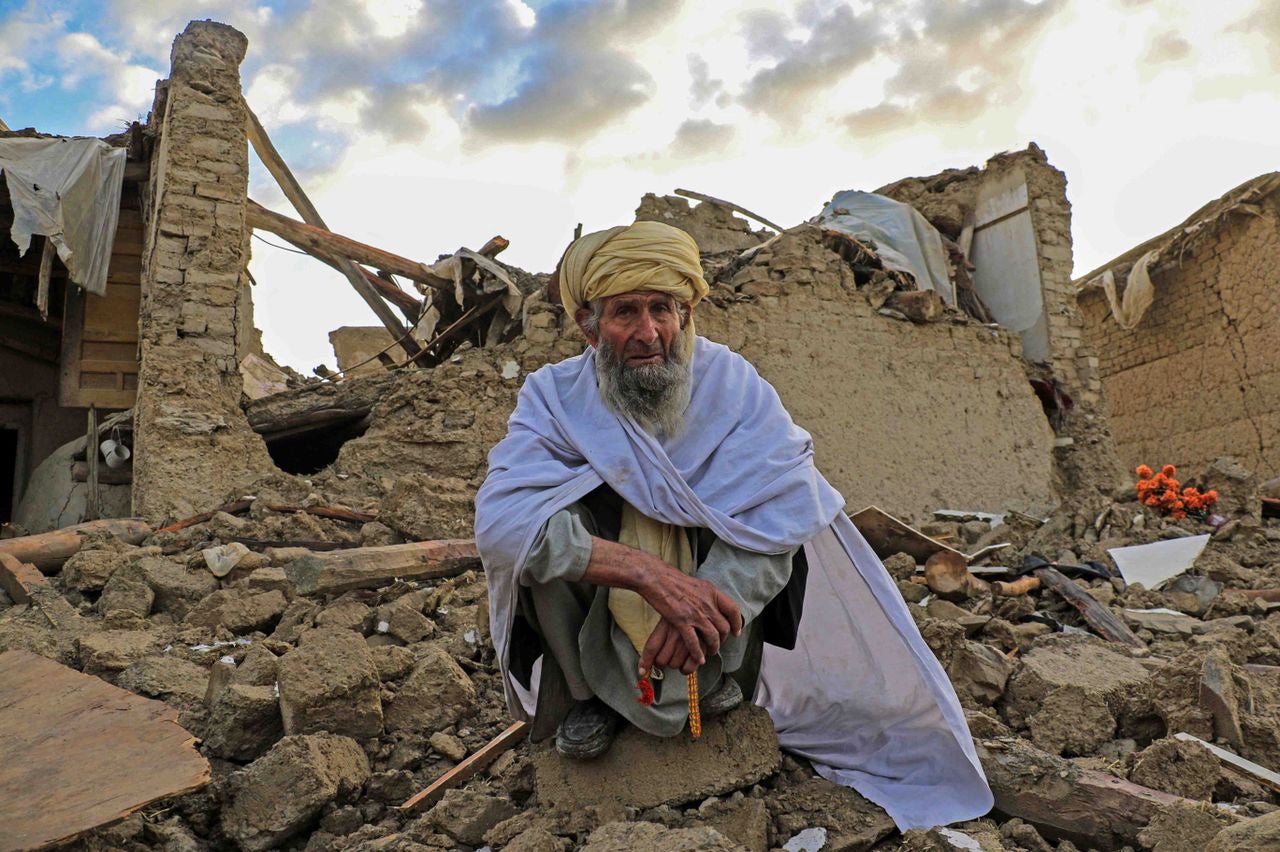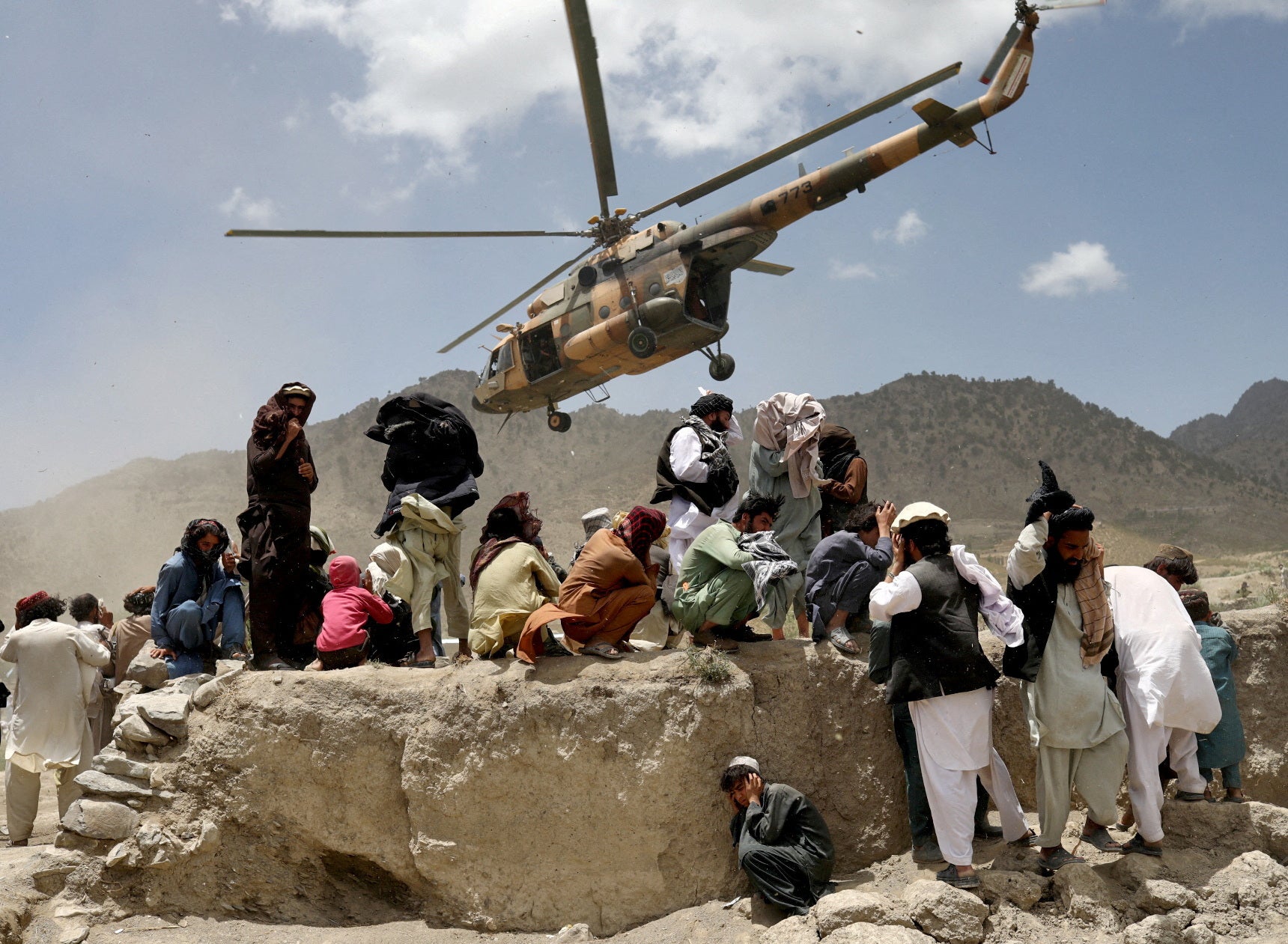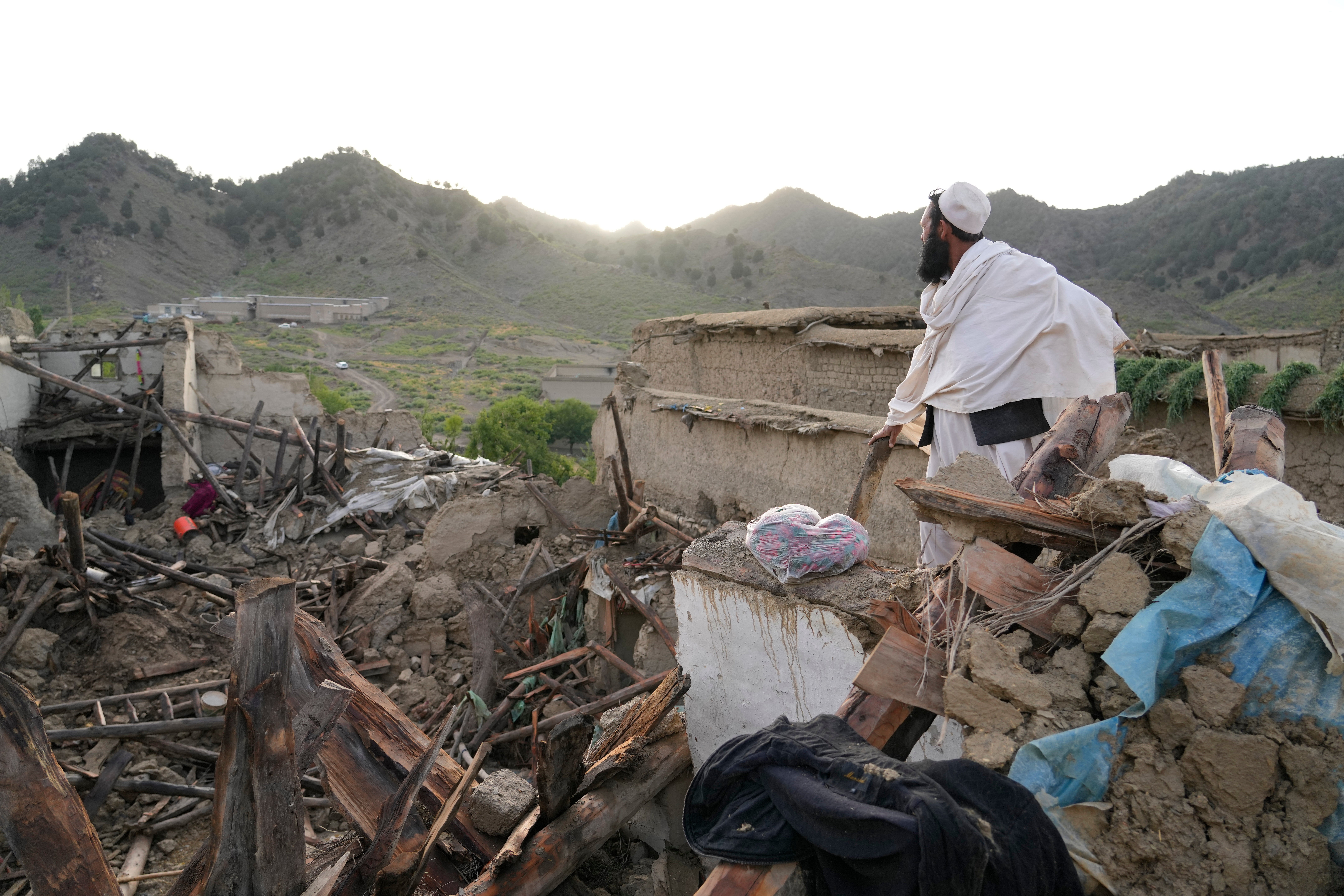‘Entire villages laid to waste’: Rescuers desperately try to reach survivors of Afghanistan’s deadly quake
Heavy rains, landslides, isolated regions, few resources from the Taliban government and international aid are all worsening the impact of the deadly quake

The full scale of the damage wrought by Afghanistan’s deadliest earthquake in two decades that struck on Wednesday killing at least 1,000 people and injuring 1,600 is still unknown, as a frantic search continued for survivors amid heavy rain and few resources.
Despite the official tally, an unknown number of people are still believed to be buried under rubble as rescuers desperately try to rescue them in the isolated, mountainous region of Paktika, before it is too late.
Rescuers working in the area tell The Independent that the scale of the damage was vast. International organisations are deploying emergency responses, but for a country in ruins for decades, resources are scarce.
The International Committee of the Red Cross (ICRC), one of the several organisations providing relief materials in the area, says the number of casualties “has been increasing by the hour” in the region.
“People on the ground have seen entire villages collapse during the earthquake. In some places, entire families have lost their lives and are trapped under the rubble,” Anita Dullard, regional media adviser of the ICRC in the Asia Pacific, says.
“People who are injured are sometimes being treated in the open, as roads have been damaged by the earthquake, making it even more difficult for people from this remote and rural part of southeast Afghanistan to reach health facilities.”
Shkula Zadran, a human rights advocate who lived in the region before the Taliban forced millions like her to move out, says entire families in her village and nearby areas have vanished because of the deadly quake.

“People have lost their homes, their houses, they don’t have safe shelters, they don’t have clean water and they don’t have adequate food to eat,” says Zadran, who still has family in the region.
“They don’t have anything to survive.”
“In our country, family means at least 17-18 people, so many people have lost everything at a glance,” says Zadran. “And there is very limited help available from the government and NGOs, so many people are still stuck under the mud and collapsed roofs and houses.”
Activists working in the region say the cold and rainy weather is making movement difficult and the numbers are still being ascertained.
“We’re still trying to assess the numbers and they obviously are large,” says Obaidullah Baheer, an activist and lecturer at the American University of Afghanistan.

He adds that following up on the status of many patients “would be difficult because not only did the Ministry of Defence fly them out to different areas but even Pakistan opened their border where people just crossed and went to seek treatment”.
The Taliban government, which has urged the international community to send aid, is facing challenges in reaching areas entirely cut off from any communication.
“We can’t reach the area. The networks are too weak, we trying to get updates,” Mohammad Ismail Muawiyah, a spokesman for the top Taliban military commander in Paktika, told Reuters, referring to telephone networks.
Most houses that have been destroyed were made of mud and concrete, and had already suffered damage from excessive monsoon rain.
Now landslides are making the rescue operations difficult too, washing away roads connecting remote villages in the area where people are still stuck, with emergency relief awaiting to be dispatched.
“The risk to people living in tectonically active, mountainous and isolated locations like this is particularly high, especially when the building stock is mostly unreinforced masonry structures and there is a high potential for landslides,” says Dr Steven Godby, an expert in natural hazards at Nottingham Trent University.
“Disasters disproportionately affect the poorest and most vulnerable, and Afghanistan has been identified as one of the countries most severely affected by disasters in terms of their impact on the population.”
“Its protracted conflict has reduced people’s coping mechanisms in the face of such a shock even further.“
The Taliban government is facing crippling international sanctions, limiting its capability to rescue people. While years of conflict had already left the isolated regions of the country in an extremely poor state, the past few months have been worse.
Activists say the latest quake has a compounding impact on the most vulnerable people of the country where a humanitarian crisis has led to a lack of basic infrastructure such as hospitals.
“The hilly areas struck by the quake are especially vulnerable, with landslides and houses which are not built according to seismic norms adding to widespread destruction,” says Ms Dullard.
“Recent flooding in many regions, which has blocked stretches of highway, is adding difficulties for the population to move and access basic needs and for aid to reach the area.”

Ms Zadran, whose mother was the only female lawmaker in the Khost region before Taliban rule, says she fears international help will be limited this time.
“The biggest challenge or obstacle is that the Taliban government doesn’t have the legitimacy. They’re not recognised by [the] international community. That’s why there isn’t enough international aid or funds,” she says.
Ms Zadran points out that the resources available, such as personnel and helicopters for the rescue, are a fraction of what the US-supported democratic government would have had.
“Even though they [Taliban] want to manage the situation or to help people, I think they are not able to,” she says.
Mr Baheer says the region has lacked developmental projects for decades.
”It’s just not only a natural disaster, it’s an economic crash, it is sanctions, it’s a lot of things happening at the same time,” he says.
“Even during the 20 years of the republic, one of the major issues was that these areas were especially impoverished because the security situation was bad: a lot of the military operations were happening there.”

“The society in reaction was getting radicalised, the Taliban were finding more recruits, which necessarily blocked access to these areas, but also international and local officials used that as an opportunity to find ways of corruption,” he explains.
Campaigners say blanket sanctions on Afghanistan should now make way for the marginalised population to get relief from a united international fraternity.
“If the world has issues with the Taliban, put on targeted sanctions on the group. Why is it that the whole population has to suffer?” asks Mr Baheer. “We are in a state of a non-existent economy.”
“We don’t have new banknotes because they haven’t been allowed to come in for the past nine to 10 months. We don’t have our federal assets because they have been frozen,” he adds.
“We don’t have a banking sector to rely on.”
“The families have been trying to send money back to their loved ones [in the country] after the earthquake, the limits on Western Union have made it difficult to receive that money,” he points out.
Activists say the Taliban and international communities need to help those affected without “politicising the issue”, as bigger challenges lie ahead in rehabilitating the population that has lost everything overnight.
“I think at this time, the responsibility is on the international community because they have the budget and the facilities. And then at a certain point, the Taliban, should facilitate the process,” says Ms Zadran.






Join our commenting forum
Join thought-provoking conversations, follow other Independent readers and see their replies
Comments